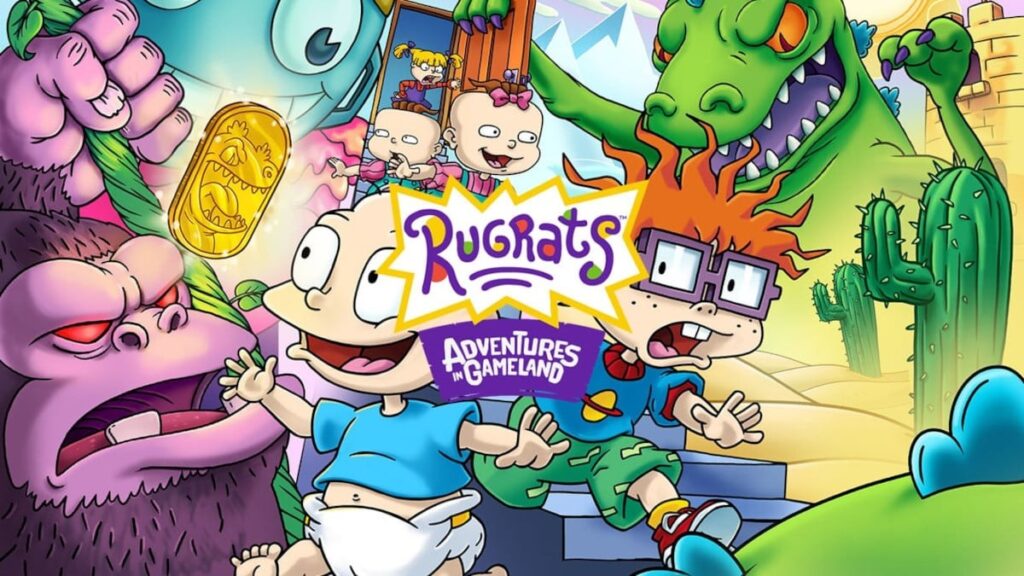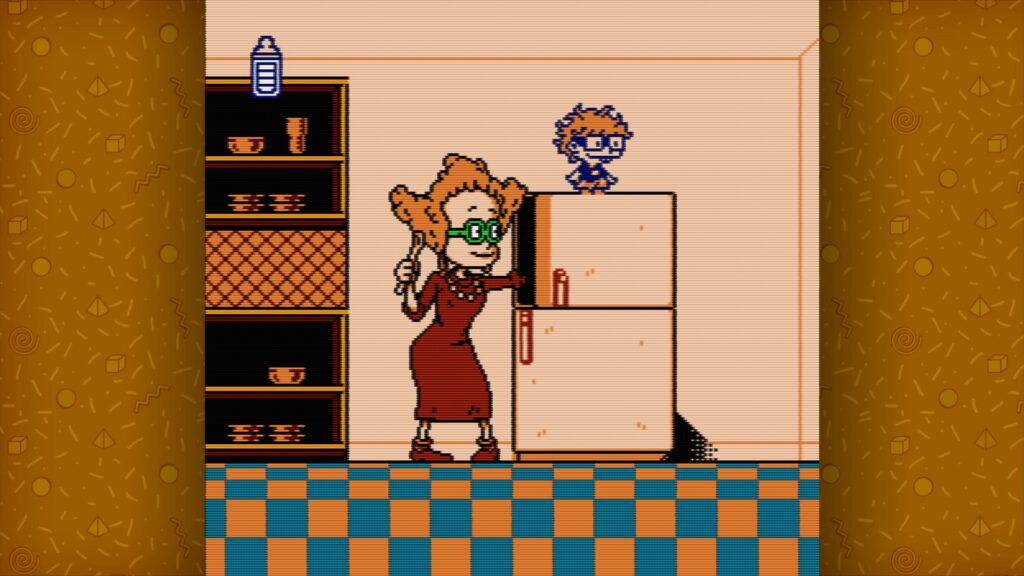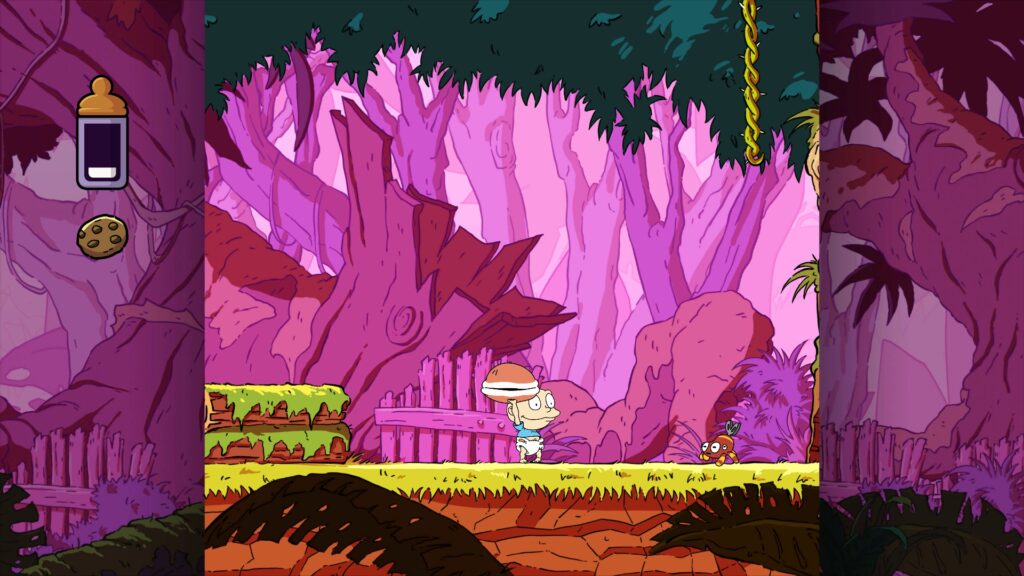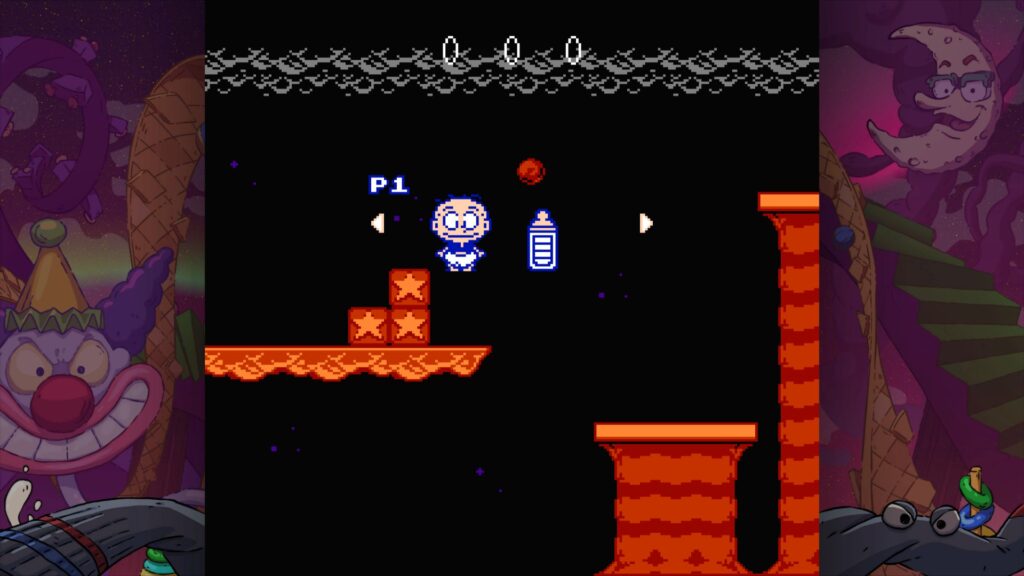
Developer: The MIX Games, Wallride
Publisher: The MIX Games
Platform: Switch, PC, PS4, PS5, Xbox One, Xbox Series X|S
Tested on: PC
Rugrats: Adventures in Gameland – Review
If you grew up in the ‘90s, then it’s almost guaranteed that you’ve seen at least a couple of episodes of Rugrats. The Nickelodeon series about the adventures of a group of babies was a massive success until the show ended its 13-year run in 2004. There was a spin-off show featuring teenage versions of everyone’s favorite toddlers, as well as a CGI revival in 2021, but neither of these saw the same success as the original series. In fact, when the CGI series was removed from Paramount+ earlier this year, it appeared that it was finally over for the franchise. Until now that is, because seemingly out of nowhere, the Rugrats are back, in video game form! We were never massive Rugrats fans back in the day, but we did enjoy the occasional episode, so we assumed that we would fit right in with Rugrats: Adventures in Gameland’s target audience. Now that we’ve played it, does Adventures in Gameland do the Rugrats justice?
Story
Set in and around the house of the Pickles family, Adventures in Gameland sees the Rugrats obsessing over the brand-new Reptar video game. Since babies don’t have any money, Tommy comes up with an idea: if he and his friends go around the house to collect all of the hidden Reptar coins, they might be able to open the Reptar door and find the “bibeo game” behind it. In typical Rugrats fashion, the levels in Adventures in Gameland take place in the imagination of its protagonists: the backyard becomes a jungle, the kitchen an ice land, etc. It’s an approach that is perfectly in line with the source material, although there isn’t any story in Adventures in Gameland beyond what the opening cutscene sets up.
Graphics
One of Adventures in Gameland’s biggest selling points is that the game can be played with both modern HD visuals as well as retro-inspired 8-bit graphics. There’s even an optional CRT filter to enhance the feeling of retro goodness. You can also switch between 4:3 and 16:9 aspect ratios. Choosing the latter option zooms in rather than actually adjusting the game though, reducing what you can see. From an aesthetic perspective, Adventures in Gameland certainly looks the part, especially in retro mode, which uses an accurate limited color palette. We preferred the retro visuals over the HD mode. While HD mode offers cartoon-accurate character designs and more detailed environments, the animation quality didn’t live up to the same standard, and reminded us of cheap Flash games instead.
Sound
The first question you have about Adventures in Gameland’s audio is probably going to be: Is the iconic Rugrats theme song in the game? And yes, it is. Kind of. The version you’re getting here is not the original but a remixed version that fits in with the game’s retro-styled soundtrack. Like the graphics, the soundtrack is available in two versions, a ‘real’ 8-bit version and a modernized version. Either will do you fine in this case. There’s no voice acting present here, which does seem like a missed opportunity, but given the age of the original voice cast, it’s understandable.
Gameplay
At first glance, Adventures in Gameland is a run-of-the-mill simple platformer. Taking control of one of the four main Rugrats (Tommy, Chucky, Phil, or Lil) you navigate short levels, defeat enemies, solve simple puzzles, and collect Reptar coins along the way. Once you’ve gathered all of the Reptar coins, you can unlock the door to the game’s final boss. For as simple of a game as Adventures in Gameland is supposed to be, however, it gets a lot of things wrong. Controlling your baby is a bit of an issue: controls often feel inaccurate, with jumping in particular being awkward. Each baby has their own stats: Chucky, being the biggest of the four, is the best at jumping, Phil is better at lifting objects, Lil can glide like Princess Peach and Tommy is the middle-of-the-road option. The way the levels are designed makes Chucky the far superior option, as the additional jump height makes things far easier.
There are six levels to choose from here, and you can tackle them in any order. Not every level is equally easy, but since there are no unlockable upgrades, it doesn’t make a difference which ones you tackle first. Adventures in Gameland can be surprisingly difficult, but this has more to do with the way the levels are laid out. Enemy placements in particular highlight the game’s retro nature, as they often feel unfair. It’s not entirely unreasonable to assume that this is intentional. Just like back in the day, Adventures in Gameland tries to force the player to return to levels over and over again, memorizing when and where enemies pop up so they can anticipate accordingly. It’s a tactic that is typically used to pad the length of a game, but we’ll get back to that. At the end of each level, there is a boss waiting for you, and these pose quite a challenge as well and require memorizing their attack patterns to overcome them.
So about Adventures in Gameland’s need to pad things out: even keeping the necessity to replay levels in mind, this is a ridiculously short game. Clocking in at around two hours, the RRP of €24.50 is woefully unjustified. It’s likely that The MIX Games is trying to capitalize on two flavors of nostalgia, both from retro game enthusiasts and Rugrats fans. Unfortunately, the final result simply doesn’t deliver for either, as you’re getting a below-average platformer here. It doesn’t help that the game seemingly forgot to put in any effort when it came to explaining how things worked. We had to figure out which objects could be picked up, or that the babies could use a ground pound to actually take out enemies instead of just stun them. It would have helped if Adventures in Gameland had offered an option to remap buttons, or at least give us a screen that explained button layouts, but it seems like that was too much to ask. The game also offers a co-op mode as well as varying levels of difficulty, but the core experience didn’t do enough to convince us to spend any more of our time in the company of our favorite cartoon babies.
Conclusion
It’s perhaps somewhat ironic that Rugrats: Adventures in Gameland would fit right in with the terrible licensed shovelware titles of the ‘90s and early 2000s. The gameplay lacks depth, the controls are awkward, and the lack of explanation of what buttons do doesn’t help either. While the audiovisual presentation is okay, that’s really not enough to justify the existence of this game. The final nail in Adventures in Gameland’s coffin is how grossly overpriced it is for both the length and quality of what you’re getting here.









No Comments